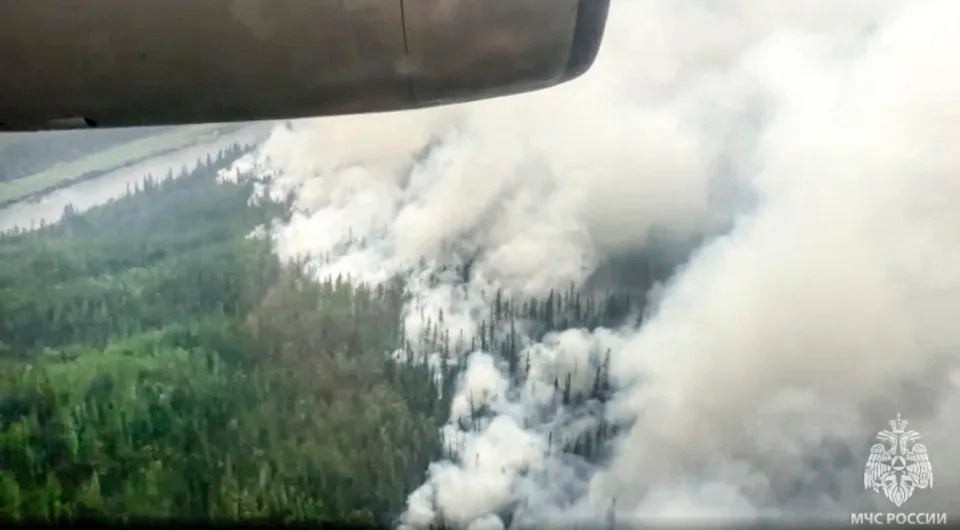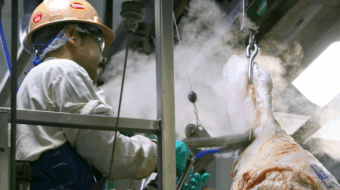
Intense wildfires are ravaging the Arctic Circle, bringing smoke and high carbon emissions, according to the European Union’s Copernicus Atmosphere Monitoring Service (CAMS).
The region had experienced 164 wildfires through June 24, most of which have been in the Sakha Republic of Russia, a press release from CAMS said.
According to data from the CAMS Global Fire Assimilation System, June wildfire carbon emissions are already the third highest for the month since 2003.
“The Arctic has been warming at a rate well above that of the planet as a whole. As a result, conditions at high northern latitudes are becoming more conducive to wildfires and a recent study shows that the northeast Arctic region, and boreal and temperate forests, have been experiencing increases in extreme wildfires. We witnessed this in 2019, 2020, and 2021, when the eastern Arctic and sub-Arctic regions experienced very high levels of wildfire activity, and again in 2023, especially at high latitudes in Canada,” said Mark Parrington, CAMS senior scientist, in the press release.
The authors of the most recent study noted that wildfire conditions are being exacerbated by climate change and that fire behavior is getting worse in several regions with significant implications for human exposure and carbon storage.
Gail Whiteman, a professor of sustainability at the University of Exeter Business School and the founder of Arctic Basecamp — a group of Arctic scientists and experts — said the Arctic is climate change ground zero.
“The increasing Siberian wildfires are a clear warning sign that this essential system is approaching dangerous climate tipping points. What happens in the Arctic doesn’t stay there – Arctic change amplifies risks globally for all of us. These fires are a warning cry for urgent action,” Whitecamp said in the press release.
CAMS and Arctic Basecamp have been working together to translate wildfire data into a climate events alert system in the Arctic.
The accumulation of wildfire smoke impacts air quality at high latitudes. It also has the potential to cause aerosols in the smoke to deposit onto surfaces like snow and ice, reducing their ability to reflect sunlight, meaning they absorb more solar energy and are more prone to melting.
According to the most recent report from the Russian federal organization Avialesookhrana (The Aerial Forest Protection Service), as of June 27, 72 active wildfires were burning in the Sakha Republic, covering an area of nearly 700,000 acres.
When the wildfires started to break out on June 11, a state of emergency was declared by authorities.
The region’s wildfire activities come after a period of unusually high surface air temperatures in late May, with local media reporting forecast temperatures seven to nine degrees Celsius above normal. Copernicus Climate Change Service data confirmed the predictions, with warmer surface temperatures and drier soils in the first three quarters of June.
As global heating leads to higher temperatures in the Arctic, wildfires have shifted north and are burning through tundra and boreal forest, which releases enormous stores of greenhouse gases from the carbon-rich soils, reported the BBC.
Guillermo Rein, a professor of fire science at Imperial College London, referred to the wildfires as a “growing monster of climate change.”
“A decade ago, Arctic wildfires were considered rare events, hardly ever studied. Now they are happening in all summer sessions,” Guillermo told the BBC.
This article was reposted from EcoWatch.
We hope you appreciated this article. At People’s World, we believe news and information should be free and accessible to all, but we need your help. Our journalism is free of corporate influence and paywalls because we are totally reader-supported. Only you, our readers and supporters, make this possible. If you enjoy reading People’s World and the stories we bring you, please support our work by donating or becoming a monthly sustainer today. Thank you!










